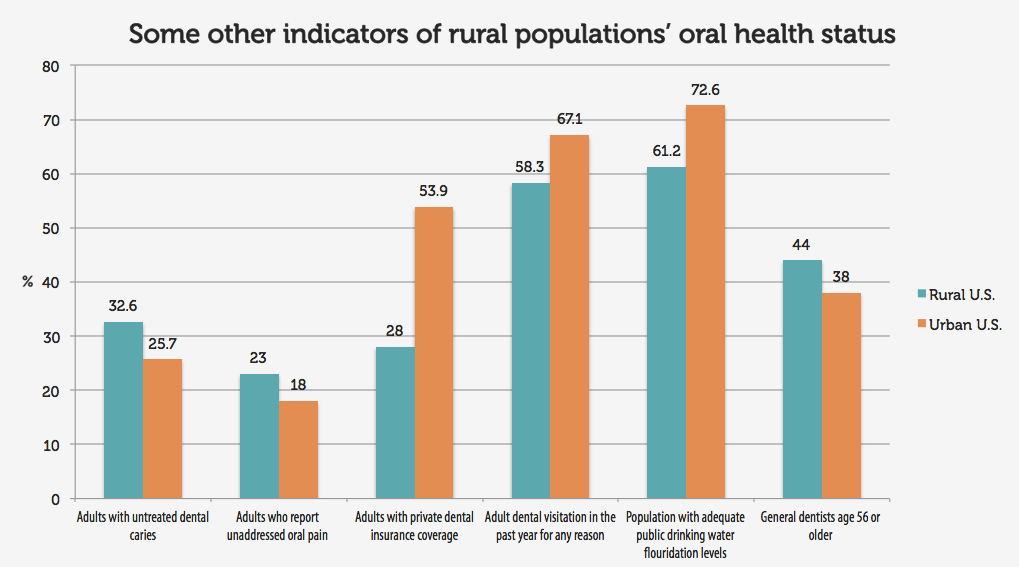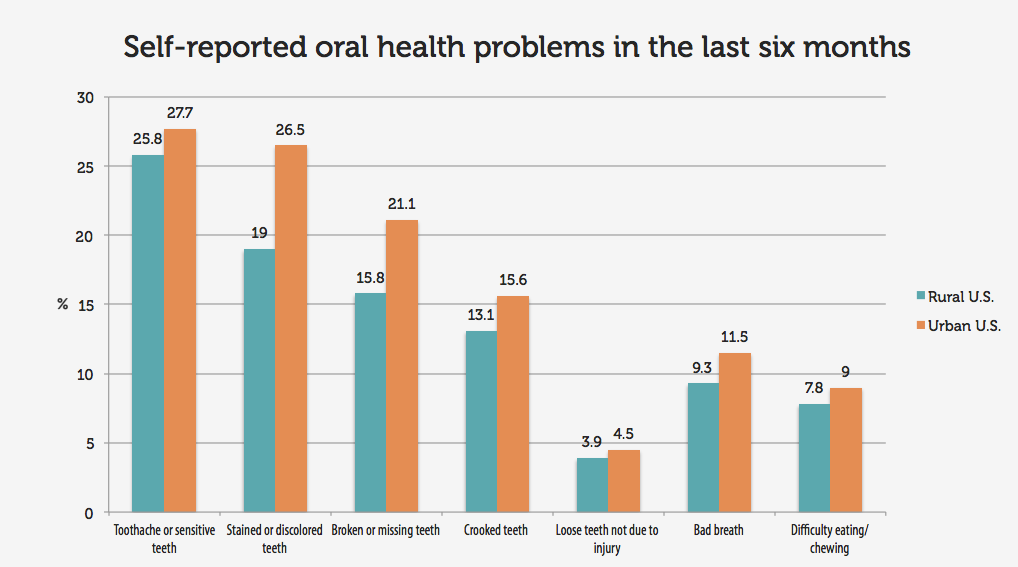Oral Health

Residents of rural areas have higher rates of dental and periodontal disease and more unmet dental need than their urban counterparts. They are also more likely to have had only one dental visit in the past year, versus urban dwellers (2-3 visits), which suggests that rural patients seek dental care only for emergencies or urgent relief rather than preventive, basic, or advanced procedures. Rural residents tend to have had a longer amount of time lapse between dental visits than urban dwellers.

Other indicators tell us more about rural populations' oral health. For example, proportionately more rural dwellers rate their oral health as "Fair" or "Poor," as compared with urban residents.
Label: Rural Populations and Access to Dental Care
As we know, dental health status is the outcome of a combination of both behavioral factors and access to dental care. As with dental health indicators, rural populations’ access to dental care is, generally, poorer than urban residents.

Here are some facts about rural populations' access to dental care:
- Over 90% of dentists locate their practices in urban areas. Less than 1% of active private practice dentists are located in remote rural areas, of which around 0.2% are specialists. Less than .05% of young dentists who go into private practice locate in remote rural areas. Almost half of rural community health centers have vacant dentist positions for 7 months or more.
- Seventy-four percent (74%) of the nation’s 2,235 Dental Health Professional Shortage Areas are in rural areas. Sixty percent (60%) of rural areas are DHPSAs.
- Rural patients travel an average distance of 17.5 miles or 27.2 minutes to see a dentist, as compared with urban populations' 8.3 miles or 20.7 minutes.
- Many of the states with the largest proportion of rural residents relative to overall population, for example Maine, Montana, and Texas, offer the most limited dental coverage (emergency services only) through adult Medicaid.

